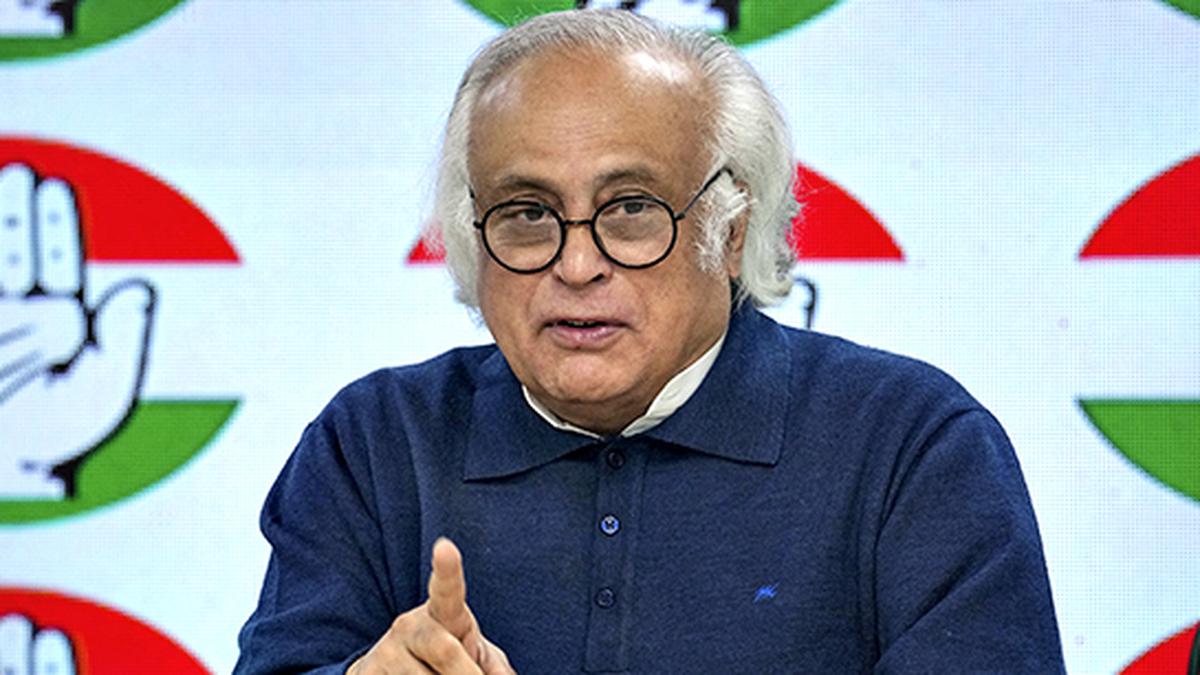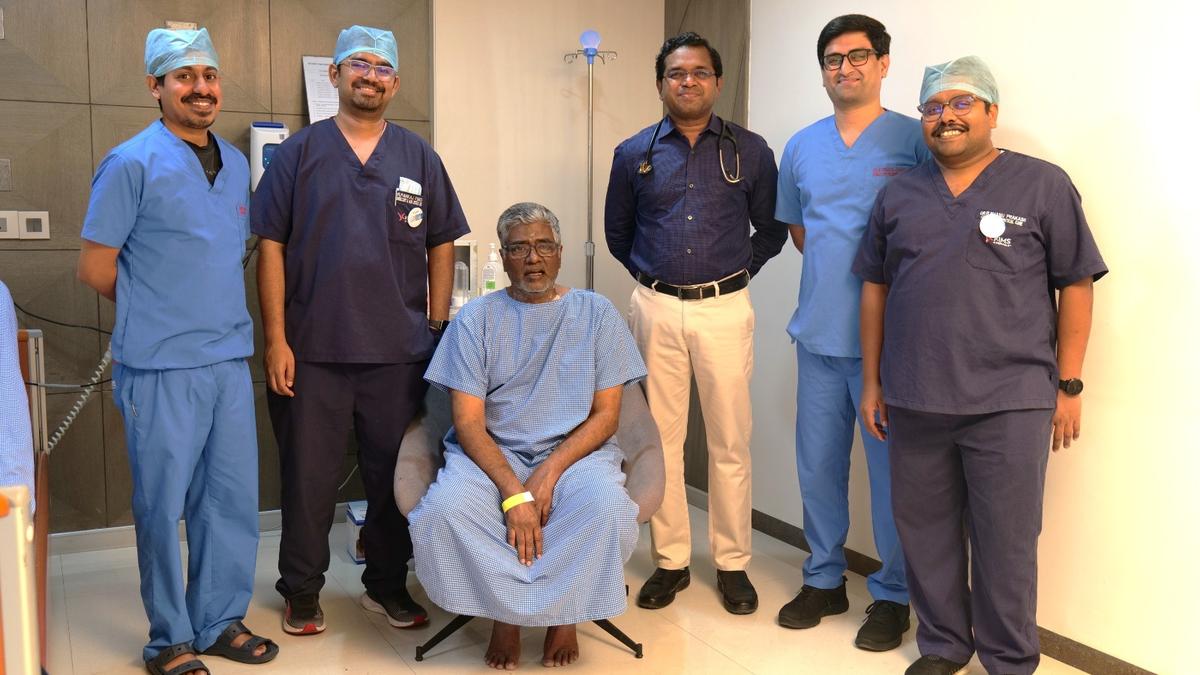ARTICLE AD BOX
Last Updated:June 05, 2025, 15:00 IST
Two Vande Bharat Express trains will cross two iconic rivers, Chenab and Anji, making seamless train travel from Katra to Srinagar a reality.

The journey between Katra and Banihal will pass through 37 bridges with a combined length of seven km. (Image: PTI)
Prime Minister Narendra Modi is set to inaugurate the 111-kilometre Katra-Banihal section of the Udhampur-Srinagar-Baramulla Rail Link (USBRL) project on Friday — a critical missing link that now allows direct train connectivity to Kashmir from Jammu.
Until now, passengers from any part of the country could only travel by train up to Katra. From there, they had to switch to road or air travel to reach Srinagar and the Kashmir Valley.
But starting Saturday, that changes. Two Vande Bharat Express trains will traverse three major geological thrust zones — Reasi, Muree, and Panjal — and cross two iconic rivers, Chenab and Anji, making seamless train travel from Katra to Srinagar a reality.
The credit for this historic change goes to Konkan Railway Corporation Ltd (KRCL).
Speaking to News18, an official from KRCL said the firm set up a project head office in Jammu and project camps at Reasi, Kauri, and Sangaldhan for smoother execution of the project.
“The KRCL mobilised a team of about 310 staff and engineers to take this project forward. The construction machinery, plant, equipment, materials, technicians, and skilled and unskilled manpower were arranged by KRCL’s construction contractors. Various national and international agencies were engaged for design support," they said.
Challenges
On one hand, the project had to pass through tunnels carved through mountains, and on the other were deep valleys that needed to be bridged for the tracks to pass through.
The 111-km section crosses various geological strata, ranging from loose conglomerate, clay, silt, and stones. According to KRCL, frequent geological changes made it difficult to assess the terrain in advance, necessitating adjustments in the design as the work progressed.

The USBRL is a 272-km-long project, and except for the 111-km section, trains were already operating on the remaining 161 km from both ends. In total, the project includes 36 tunnels (collectively 119 km) and 943 bridges.
The ministry believes that the USBRL project – sanctioned in 1994-95 – is perhaps the most difficult new railway line project undertaken in the country post-independence.
Bridges
The journey between Katra and Banihal will pass through 37 bridges with a combined length of seven km. The list includes 26 mega and major bridges and 11 minor ones.
When starting the journey from Katra, passengers will come across a number of minor bridges and at least four unique bridges on their way to Srinagar – Bridge Numbers 35, 39, 43, and 44.
Anji Bridge
The first among these four major bridges will be Bridge Number 35 – Anji Bridge – the first cable-stayed railway bridge in India. Connecting Katra and Reasi, the bridge has 96 cables. It is designed to withstand the region’s challenging terrain and seismic activity.
6 days left till steel meets the sky 🌉Anji Bridge — India’s first cable-stayed Rail bridge — is set to soar in Jammu & Kashmir pic.twitter.com/vgLoUvzXU4— Ministry of Railways (@RailMinIndia) April 13, 2025
Built by Konkan Railway, the bridge spans the Anji River – a tributary of the Chenab. Situated about 80 kilometres from Jammu, the Anji Bridge is 331 metres above the riverbed and stretches 725 metres across. The total length of cable strand used in the bridge is an impressive 653 kilometres. Over 8,200 metric tonnes of structural steel were used for its construction.
Bridge Numbers 39 and 43
Next in line are Bridge Numbers 39 and 43, both constructed by Afcons for KRCL.
The double-line Reasi station yard is located on Bridge 39. Spanning 490 metres, it features seven towering, rectangular, tapered hollow piers, with the tallest soaring to 103 metres — nearly 30 metres higher than the iconic Qutub Minar.
The superstructure of B-39 is a continuous composite steel girder. The construction of the bridge involved a mammoth 7.5 lakh cum of earthwork in excavation for the foundation, about 36,500 cum of concreting with 7,000 MT of reinforcement steel, and 7,552 MT of structural steel.
Just ahead of B-39 is the 777-m-long Bridge Number 43. The double-line Salal station yard is located on this bridge. The superstructure of the bridge is a continuous composite steel girder. The bridge is partly straight (490 m) and partly curved (287 m).
The major part of B-43 is located on a gentle to moderate slope, but the initial four foundations are located on a steep slope and have been stabilized by a special hybrid well foundation. Construction of this bridge involved about four lakh cum of earthwork, 36,948 cum of concrete, 5,862 MT of reinforcement steel, 7,920 MT of structural steel, and 15,959 m of micropiles.
It is important to note that the concept of hybrid foundation was adopted on USBRL Bridges 39 and 43 due to the peculiar alignment along steep hill slopes.
As per official records, it was not feasible to provide open foundations or sink dry wells, as excavation could have triggered slope instability. Hybrid foundations were constructed using micropiles in such a way that the lower portion functions as a pile foundation and the upper portion as a conventional well.
Chenab Bridge
Next in line is Bridge 44 across the River Chenab. Built at a height of 359 m from the riverbed, the Chenab Bridge has a central span of 467 m. This bridge qualifies for the world record for being the highest rail bridge from the riverbed. The bridge is taller than the Eiffel Tower, the Railways has claimed.
To construct the arch portion over the river, a novel cable car-based method was designed and commissioned. This cable car system operates on 54-mm-thick cables stretched across the river valley and anchored to 127-metre-high pylons on either side. The project required a massive amount of structural steel, with the Chenab Bridge alone consuming approximately 29,000 metric tonnes.
To ensure long-term durability despite harsh weather conditions, corrosion-resistant paint has been used. In addition, the structure is blast-proof and can withstand earthquakes of up to magnitude 8 on the Richter Scale. The bridge is also equipped with an online safety monitoring system for real-time alerts. The expected life of the Chenab Bridge is more than 100 years.
Chenab Bridge can withstand wind speeds of up to 260 kilometres per hour. Structural steel suitable for temperatures ranging from minus 10 to 40 degrees Celsius has been used, ensuring resilience across seasonal extremes. The most sophisticated ‘Tekla’ software was used for structural detailing, enabling high precision in design and execution.
Out of the 37 bridges, 24 are located between Katra and Dharam, including Chenab and Anji.
The total length of the remaining 22 bridges — excluding Anji and Chenab — is 2.6 km and involved about 15 lakh cum of earthwork, 1.5 lakh cum of concrete, 27,000 MT of reinforcement steel, and 28,000 MT of structural steel.
Tunnels: Carving Through the Himalayas
Out of the 111-km Katra-Banihal section, 97.42 km (87%) lies in tunnels. The section houses not only some of the tallest and most unique bridges but also 12.77-km-long Tunnel No. 50, India’s longest transportation railway tunnel.

T-50 connects Khari and Sumber and passes through complex geology including quartzite, gneiss, and phyllite. The route faced major construction hurdles such as high water ingress, landslides, shear zones, and jointed volcanic rock formations. To meet these challenges, engineers built three access tunnels to allow work from multiple faces simultaneously, accelerating the construction timeline.
The design includes a main tunnel and a parallel escape tunnel, connected through cross-passages every 375 metres to ensure safety. This tunnel is equipped with CCTV cameras installed at every 50 metres, with all feeds monitored from a central control room to support safe and smooth operations.
Between Katra and Dharam, a total of 16 tunnels with a collective length of about 45 km are located. The construction of these tunnels was done by the New Austrian Tunneling Method (NATM), the I–System, and conventional methods.
Among the other long tunnels along the route is the 9-km Tunnel No.13, located near Dugga in Reasi district.
With the commissioning of the Katra-Banihal section, the decades-long dream of seamless train travel to the Kashmir Valley becomes a reality. Beyond engineering marvels, this line promises new avenues for tourism, trade, and strategic connectivity — linking one of India’s most remote regions to the heart of the nation.

Nivedita Singh is a data journalist and covers the Election Commission, Indian Railways and Ministry of Road Transport and Highways. She has nearly seven years of experience in the news media. She tweets @nived...Read More
Nivedita Singh is a data journalist and covers the Election Commission, Indian Railways and Ministry of Road Transport and Highways. She has nearly seven years of experience in the news media. She tweets @nived...
Read More
- Location :
- First Published:
News india Kashmir Vande Bharat: Train Journey From Katra Via 37 Bridges, 27 Tunnels Paves Way To Srinagar



.png)
.png)
.png)
















 2 days ago
2
2 days ago
2









 English (US) ·
English (US) ·